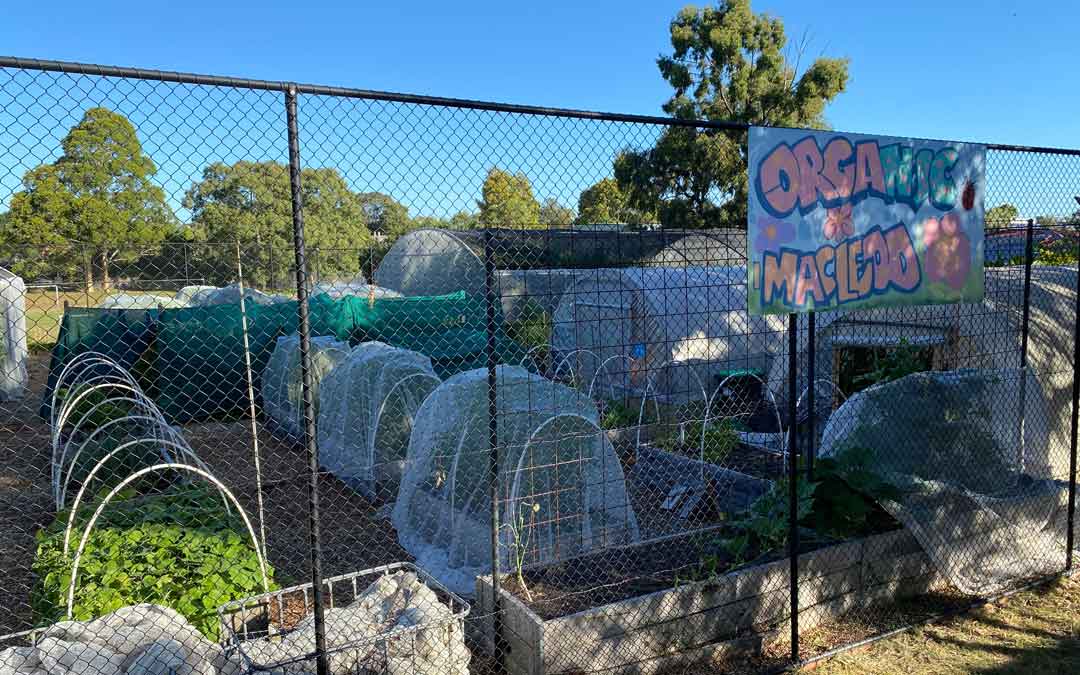Choosing a community garden

Recently a woman came to the Sustainable Macleod Community Garden researching our garden and others to find a garden that was a good fit for her. Not many people do this but it is essential that prospective members understand that no two community gardens are alike and what the word ‘community’ refers to in each case.
The first thing to find out is what the organisational structure is. Community gardens can be:
- unincorporated
- incorporated in their own right
- a project or sub-committee of an incorporated association.
Incorporation has many advantages including being able to apply for grants without having to have an auspice allowing the group to manage their own funds; obtain insurance; accountability for income and expenditure each year (providing financial statements to Consumer Affairs annually), and provision of a set of Model Rules that can be adopted in full or for a fee, modified to suit the group. The Sustainable Macleod Community Garden belongs to the last category, being a project of Sustainable Macleod Inc. It is governed by the Sustainable Macleod Inc Rules of Association and additionally has its own set of protocols.
The second thing is to read the rules. In the case of unincorporated gardens, they generally have a set of rules, and the other 2 by law, have a set of rules, and may have additional rules applicable to specific behaviour at the garden. Ask yourself whether you can abide by the rules. If you can’t, that garden is not for you. Be aware that the word ‘community’ does not mean everyone can join or that it implies a ‘free-for-all’ approach.
The next thing to consider is whether you want a community garden of individual plots or one gardened communally. Plot gardens have advantages for some people. These include having a key to the garden, being able to attend whenever it suits, keeping all your harvest for yourself, and being free to plant whatever you choose within that garden’s protocols (some gardens do prohibit certain plants such as bramble type berries and other invasive plants and in future, key holders of many gardens are likely to have to abide by protocols for excluding Queensland Fruit Fly in areas where QFF is establishing). These gardens are always run by a committee of management and often have a monthly working bee to keep the communal areas such as paths, communal beds along fence lines, fences etc tidy and maintained. All plot holders are expected to participate. The annual fee for a plot garden is usually more expensive than for a communal garden and the member needs to supply all their own inputs such as seeds, plants, fertiliser, tools, netting etc.
Communal gardens are more complex. These are managed gardens, usually with a management committee, which is open to suggestions from all members. Members need to be able to work and make decisions as a team and have good negotiation and conflict resolution skills because not everyone can have their way all the time. They will often have specific opening times, keys will be restricted and everyone will need to be prepared to do both the fun jobs and those that they don’t particularly enjoy. These gardens will usually provide a comprehensive list of jobs at each opening session including some for people who are less able bodied. The harvest is shared in whatever way that garden decides. The annual fee is usually a lot lower than for plot holders and the Association supplies all inputs so it can be considerably cheaper to belong to a communally gardened one.
In a plot garden, the owner starts from scratch when they acquire the plot. With a communal garden, the establishment phase is always the most popular but once the infrastructure is complete, it becomes a maintenance garden. Finding out what stage a communal garden is at is something to consider. Numbers generally drop off after the initial excitement. This may suit some people but not others.
Other consdiderations include
- whether the garden is fenced or unfenced
- whether it is organic or not, or if a plot garden whether you are happy with some gardeners being organic and some not
- harvest protocols including whether you are happy if a portion of the harvest is given to individuals or organisations who don’t contribute to producing it
- whether it is a teaching garden with more experienced gardeners teaching less experienced
are children welcome and are there protocols around children in the garden? - is there a minimum time commitment for communal gardens?
- are you required in a plot garden to keep your garden tidy and under what terms can your tenure be terminated?
Choosing a community garden is no mean feat. It takes time and research to find the right one for you. Visit as many gardens as you can, talk to people there, read the Rules and protocols, and spend a couple of sessions as a guest participant before making your decision.
References:
Helen Macpherson Trust and Sustainable Gardening Australia, Community Garden’s Manual, Community based gardening.
Written by Robin Gale-Baker
